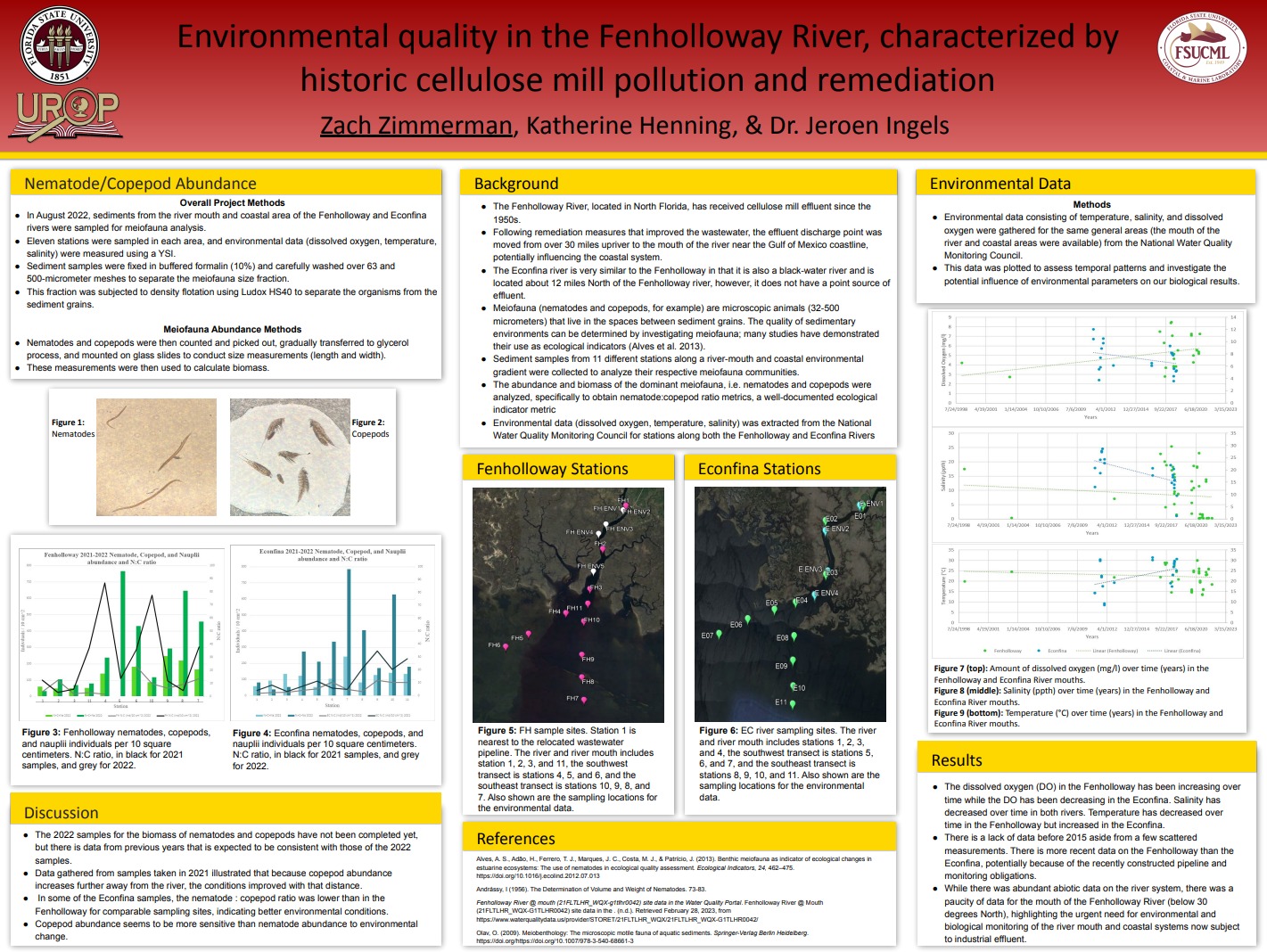Research Symposium
23rd annual Undergraduate Research Symposium, April 6, 2023
Zach Zimmerman Poster Session 4: 4:00 pm - 5:00 pm/ Poster #403
BIO
Zach Zimmerman is a first-year student at Florida State University and is from St. Charles, Missouri. He decided to move to Florida to further pursue his passion for the environment, especially aquatic life, hence his major being Environmental Science. He is interested in research that involves conservation and remediation of the environment but has a bias towards marine environments. He has felt gravitated towards the field of conservation since he was a kid, helping any insect or animal trapped in his house or injured in the wild. He has not yet decided exactly what career suits him best but is between conservation, high school education, and astronomy.
Environmental quality in the Fenholloway River, characterized by historic cellulose mill pollution and remediation
Authors: Zach Zimmerman, Jeroen IngelsStudent Major: Environmental Science
Mentor: Jeroen Ingels
Mentor's Department: FSU Coastal and Marine Laboratory Mentor's College: Ghent University Co-Presenters:
Abstract
The Fenholloway River, located in North Florida, has received cellulose mill effluent since the 1950s. Following remediation measures that improved the wastewater, the effluent discharge point was moved from upriver to the mouth of the river near the Gulf of Mexico coastline, potentially influencing the coastal system. Sediment samples were taken along the mouth of the river (and in the nearby Econfina River system as control) and into coastal habitats with the purpose of assessing changes in sedimentary ecosystem health in the summers of 2019, 2021, and 2022. Nematodes (roundworms) and copepods (a type of crustacean) are both microscopic organisms that live in aquatic systems worldwide and have demonstrated use as bioindicators. Nematodes and copepods were counted and their biomass was assessed; the nematode: copepod ratio was then used as an ecological index to assess spatial and temporal patterns. In addition to gathering biological data, environmental data (dissolved oxygen, temperature, salinity) were extracted from the National Water Quality Monitoring Council for stations along both the Fenholloway and Econfina Rivers, to assess temporal and spatial patterns and variability which may have influenced the biota. While there was abundant abiotic data on the river system, there was a paucity of data for the mouth of the Fenholloway River (below 30 degrees North), highlighting the urgent need for environmental and biological monitoring of the river mouth and coastal systems now subject to industrial effluent.
Keywords: nematodes, copepods, abundance, environmental quality


